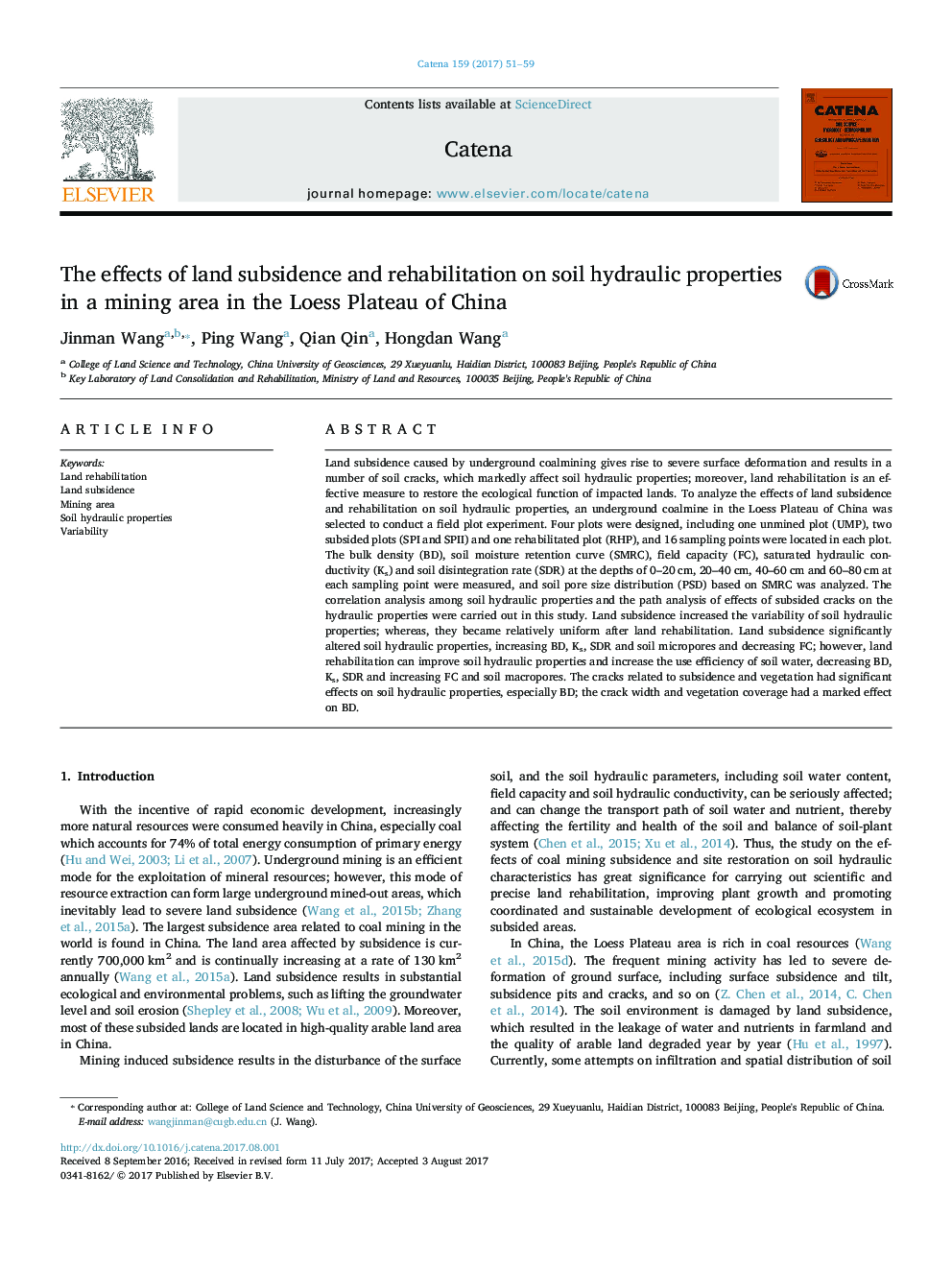| Article ID | Journal | Published Year | Pages | File Type |
|---|---|---|---|---|
| 5770065 | CATENA | 2017 | 9 Pages |
Abstract
Land subsidence caused by underground coalmining gives rise to severe surface deformation and results in a number of soil cracks, which markedly affect soil hydraulic properties; moreover, land rehabilitation is an effective measure to restore the ecological function of impacted lands. To analyze the effects of land subsidence and rehabilitation on soil hydraulic properties, an underground coalmine in the Loess Plateau of China was selected to conduct a field plot experiment. Four plots were designed, including one unmined plot (UMP), two subsided plots (SPI and SPII) and one rehabilitated plot (RHP), and 16 sampling points were located in each plot. The bulk density (BD), soil moisture retention curve (SMRC), field capacity (FC), saturated hydraulic conductivity (Ks) and soil disintegration rate (SDR) at the depths of 0-20Â cm, 20-40Â cm, 40-60Â cm and 60-80Â cm at each sampling point were measured, and soil pore size distribution (PSD) based on SMRC was analyzed. The correlation analysis among soil hydraulic properties and the path analysis of effects of subsided cracks on the hydraulic properties were carried out in this study. Land subsidence increased the variability of soil hydraulic properties; whereas, they became relatively uniform after land rehabilitation. Land subsidence significantly altered soil hydraulic properties, increasing BD, Ks, SDR and soil micropores and decreasing FC; however, land rehabilitation can improve soil hydraulic properties and increase the use efficiency of soil water, decreasing BD, Ks, SDR and increasing FC and soil macropores. The cracks related to subsidence and vegetation had significant effects on soil hydraulic properties, especially BD; the crack width and vegetation coverage had a marked effect on BD.
Related Topics
Physical Sciences and Engineering
Earth and Planetary Sciences
Earth-Surface Processes
Authors
Jinman Wang, Ping Wang, Qian Qin, Hongdan Wang,
